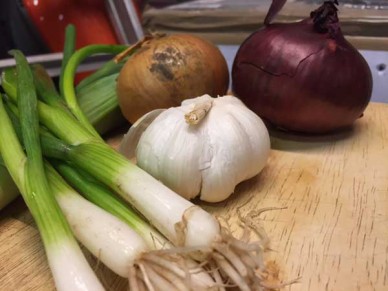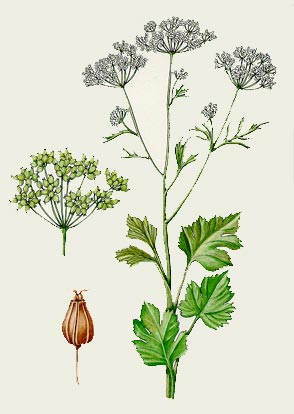On the grape, from Moldenke:
Gen. 9.20-21. And Noah began to be an husbandman, and he planted a vineyard: And he drank of the wine, and was drunken; and he was uncovered within his tent.
14.18 And Melchizedek king of Salem brought forth bread and wine: and he was the priest of the most high God.
Lev. 19.10 And when ye reap the harvest of your land, thou shalt not wholly reap the corners of thy field, neither shalt thou gather the gleanings of thy harvest.
p. 242
The common grape-vine, Vitis vinifera, is mentioned throughout the Bible, from the days of Noah (about 2347 B.C.) to those of Jesus. Prophets, patriarchs, psalmists, and apostles all spoke of it, often employing it in a symbolic sense. "The fruitful vine" and "the vine brought out of Egypt" were symbolic of the Jewish people, while Jesus compared himself to that ‘true vine’ of which his disciples were the branches… It is the very first plant to be recorded in the Bible as cultivated, and it has been cultivated so long by the human race… that its exact origin is now shrouded in mystery. It is considered to be a native of the hilly regions of Armenia and the countries bordering on the Caspian Sea, esp on the southern side of this body of water, according to John smith.
p. 243
From the story of the dream of pharaoh’s butler and from painting, inscriptions and sculptures on ancient Assyrian and Egyptian monuments and record, we know w/o doubt that it was early cultivated in those lands. Palestine was described as a “land of wheat and barley, of vines and fig trees and pomegranates.’
Dr. Robert Griggs of George Washington University, in a letter dated mar. 7, 1940, states that he believes that the grapes brought back by Joshua and Caleb were bananas, musa paradisiaca. He says, ‘It impressed me bec. bananas are obviously the only fruit a bunch of which would constitute a man’s burden as there described, and bec. interpretation of the txt in that way made a rational acct of what on the face of it appeared a statement wc could not possibly be true. Furthermore, my slight acquaintance w/ higher criticism has indicated that the translators of the English text were very much at a loss to find English equivalents for the words of the original and upon discovering mention of a fruit in bunches, grapes would be the most natural way to construe it.’
The grape-vine of the old world sometimes assumes the habit of a tree, w/ a stem up to a ½ feet in diameter, the branches then being trained on a trellis, and bearing bunches of grapes 10 or 12 lbs in weight, the indiv. berries the size of small plums. .. The vines of Palestine were always renowned both for the luxuriance of their growth and for the immense clusters of grapes they produced. Travelers have again and again commented on the large sizes of the grape-clusters of Palestine.
Master’s reminds us that the specific names applied to the bananas namely sapientum and paradisiaca, were applied in the belief that bananas constituted the "forbidden fruit" of the "tree of knowledge of good and evil" in the garden of Eden, and that according to classical tradition it was bananas that the spies brought back. However, if bananas really were cultivated in Palestine in those days it is most remarkable that they would not have been mentioned more often in the scriptures and that there would not have been a special heb word applying to them. Post regards the banana as a native of India, and states that it is now widely cultivated in our area.
The Heb. word usually translated vine in the many biblical passages.. is gefen or gephen. The Heb. Name still used today for the grape-vine in Palestine is "gefen", according to Post (266). Other words are rendered "grape" (Hebrew, "enav" or "a'navim"), "wine" (Hebrew, "yayin"), "vineyard" (Hebrew, "kerem"), "grape gatherers", "cupbearer" (Hebrew, "mashkeh"), "winefat", "winepress", and "drunken" (Hebrew, "shikor")…
244
The leaves of the common grape-vine differ from those of most of our cultivated American grapes in being rounded heart-shaped, 5-Iobed, and coarsely toothed. The branches bear tendrils, and the small, inconspicuous, greenish flowers are panicled …
The time of vintage was a season of gen. festivity and usually commenced in Sept. The towns were then practically deserted and the people lived in temp. tents and lodges among the vineyards… the finest ones were saved for eating and kept in flat open wicker baskets… also made the dried raisins ( tx’mookim). The rest of the harvest was carried to the big stone winepresses, dug or hewn out of the rocky soil. This juice, according to dr. Robinson, is boiled down to a sirup, wc, under the name of dibe, is much used by all classes, wherever vineyards are found, as a condiment with their food.
The grape-vine is said to have been introduced into France in 540 B.C., and soon thereafter into the southern parts of Europe by the Romans (299). Its successful cultivation is more or less limited to the zone between 36° and 48° in both the Northern and Southern Hemispheres. The heat or cold beyond these limits hinders the full perfection of its fruit.



